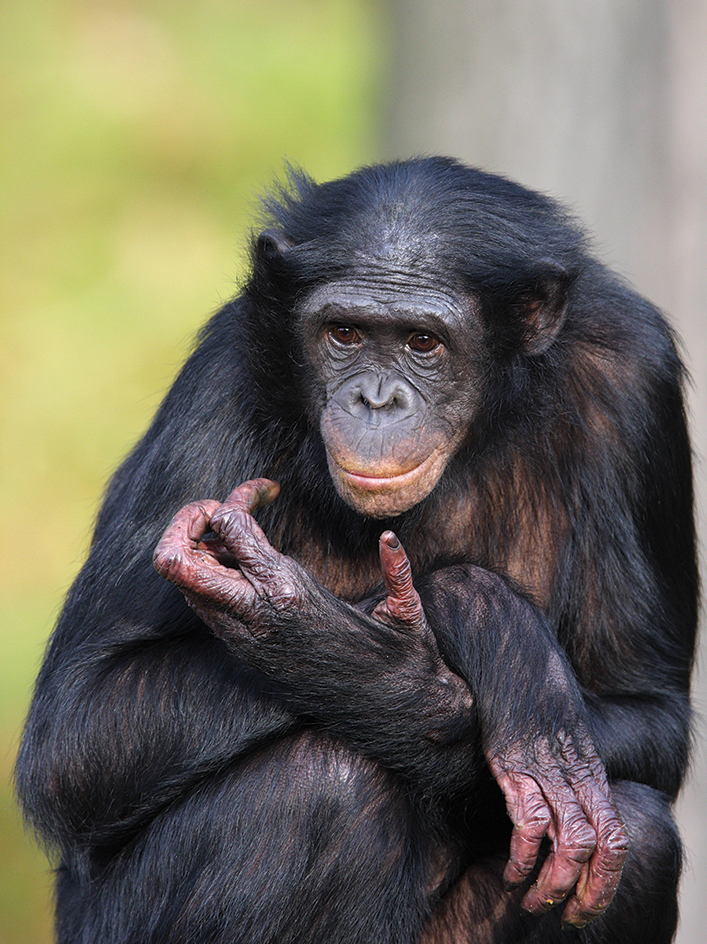Bonobo, << buh NOH boh, >> is an African ape closely related to the chimpanzee. Bonobos live in an area of African rain forest south of the Congo River in the Democratic Republic of the Congo.


Bonobos have been called pygmy chimpanzees. But they are only slightly more slender than chimpanzees. Adult bonobos typically weigh from 70 to 100 pounds (32 to 45 kilograms). Bonobos have smaller heads, flatter faces, and longer legs than do chimpanzees. Bonobos have coal black hair and black faces, hands, and feet. Their lips and eyelids are often pink. Bonobos have high-pitched voices and may make birdlike sounds.

Bonobos spend much of their time in trees. They dive, hang, jump, and swing acrobatically from branches. Bonobos also visit the forest floor. They move along the ground when traveling long distances. Like gorillas and chimpanzees, bonobos usually walk on all fours, supporting their upper bodies with their knuckles. They occasionally walk on two legs. Bonobos eat mostly fruits. They also eat other plant parts and some meat.
Bonobos are social animals. They live in groups, usually of about 6 to 15 individuals. The groups are part of larger communities of more than 100 bonobos. Group size and membership may change from one day to the next. When food is plentiful, a group may expand to include nearly the entire community.
The group life of bonobos is unusual among primates, the group of animals that includes monkeys, apes, and people. Bonobo females form strong alliances. The alliances protect females from being harassed or overpowered by males. By contrast, female chimps do not form strong alliances, and male chimps often harass or overpower them. Bonobos show less aggression (violence) toward group members than chimps do.
Loading the player...Bonobo
Bonobos also are unusual in that they frequently mate and engage in other sexual activity. Most mammals mate only during relatively brief periods when the female is ready to breed. However, bonobos mate continually throughout the year. Frequent sexual activity may help bonobos to reduce aggression between members of the group. In several respects, the mating patterns of bonobos more closely resemble those of humans than those of other animals. But scientists caution that bonobos have mostly been studied in zoos. Bonobos’ behavior there may differ from that of bonobos in the wild.
Bonobos are in danger of dying out completely in the wild. Human beings threaten bonobos by destroying the forests where they live. People also illegally hunt bonobos. There are a handful of national parks and sanctuaries in central Africa where bonobos are protected. However, protecting bonobos is difficult because they live in remote forests. Wars in the region have also interfered with bonobo conservation.
